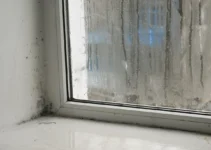Do you think your dishes and other kitchen utensils are very clean? Maybe, but they can be even cleaner! How can you make that happen? Here are a few simple ones to eliminate the most common kitchen cleaning mistakes. An experienced hostess will clean her kitchen with chemicals, but even cleaning companies sometimes resort to simple folk remedies.
Cleaning the microwave and oven

Source: thetablehuff.com
Sure, you can use expensive cleaning products, but we highly recommend using a completely safe and easy to use product – https://www.amazon.com/Steaming-Microwave-Equipment-Temperature-Mikrowave/dp/B08M488428.
No chemicals, no effort, and all eco-friendly. Angry Mama will help you easily clean not only the oven and microwave, but also eliminate unpleasant odors from the refrigerator. More and more housewives prefer this way of cleaning.
Ruler for fume cupboards
Dust on ventilation grilles can be removed in several ways, the most effective of which are vacuuming or blowing with a can of compressed air. In any case, after cleaning the main contaminants, it is worth wiping the hood with a damp cloth: it is most convenient to do this by winding the cloth on an ordinary ruler.
Alcohol for glasses
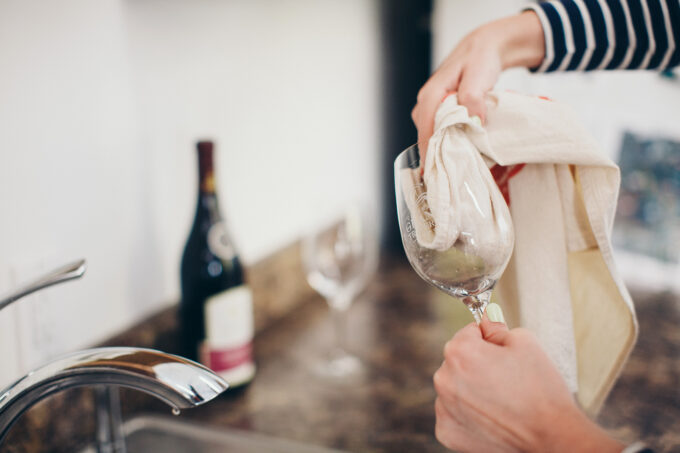
Source: cgtwines.com
Crystal and glass glasses often leave unsightly streaks after washing. Alcohol can help to get rid of them: mix it with water in a ratio of 1:1 and wipe the glasses. After such a wash, there will be no streaks, and the glass will literally shine.
Paper towel in the refrigerator
Cleaning your refrigerator is great fun, but you can do it less often with a paper towel. Condensation (from fogged up containers or fresh vegetables) usually accumulates in refrigerator compartments and forms puddles and streaks. A piece of paper towel placed under vegetables or bottles will get rid of this problem. You can also use, for example, a bag of silica gel from a shoebox to get rid of condensation.
Flour Against Grease
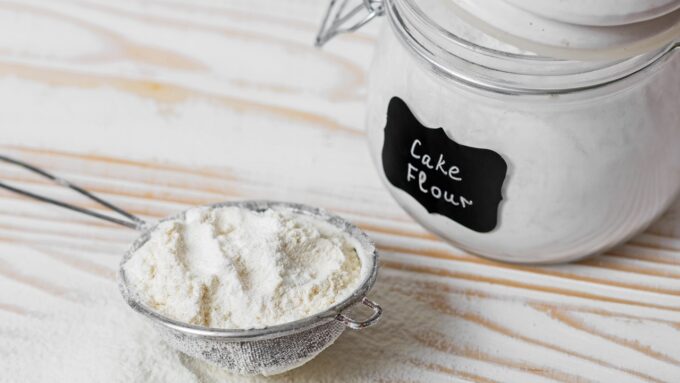
Source: spruceeats.com
Grease stains, especially stale ones, are sometimes easier to remove with a metal sponge than with a rag. If the surface requires delicate handling, a grease stain can be sprinkled with flour and then gently rolled up and removed without scratching. On the stove, for example, this method works great.
Mayonnaise for plants
An unexpected tip, but if you have artificial flowers in your kitchen, you can “revitalize” their appearance with mayonnaise. When cleaning, dust the leaves and then wipe them down with water and mayonnaise in a 1:3 ratio, and the plant will shine. This method is suitable for making any thin, glossy plastic shine.
Coffee instead of flavoring
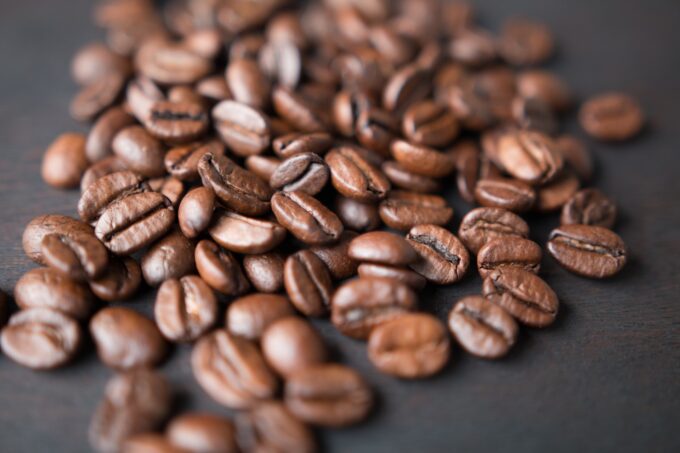
Source: unsplash.com
After cleaning the room or after cooking strong smelling dishes, you can add a pleasant aroma of coffee to the kitchen: simply put a tablet of a burning candle in a container of coffee beans and the room will be filled with the wonderful smell of coffee.
How do I clean my cutting boards?
To thoroughly clean plastic cutting boards, simply soak them in water for an hour and then wash them. A different method works with wooden boards, but also simple: rub the boards with a mixture of salt and lemon juice, leave them for 15 minutes. In the end, the boards will be clean and odorless. And to get rid of germs, send the board in the microwave for 1 minute.
Washing Cutlery
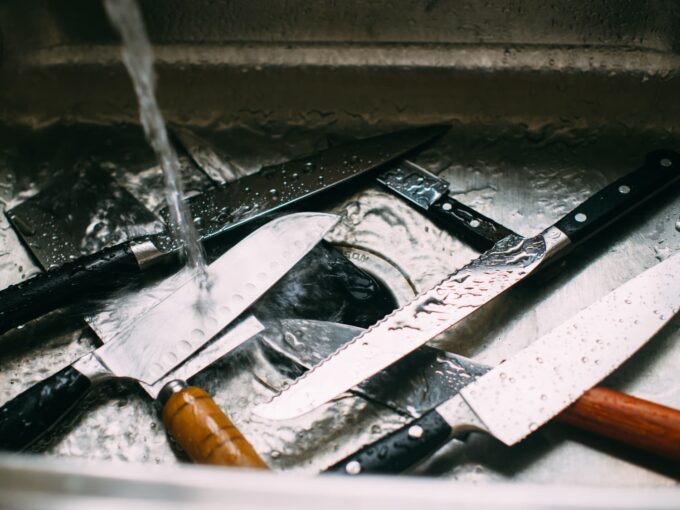
Source: thekitchn.com
To make spoons, forks and knives shine like new, put them in a deep pan, pour water, add a spoonful of baking soda and boil for 5-7 minutes. Rinse well and, like magic, not a speck of dirt or grease will remain anywhere. This tip is good for stainless steel and silverware.
Important tip: Wipe everything dry and hang the towels up gently after each use.
- Wash the plate – wipe it with a towel on all sides – put it back. This way, the dishes don’t accumulate stubborn dirt on the outside.
- Wash and wipe down the stove every time you use it.
- Wipe the sink and countertop dry. If they dry on their own, dust and heavy kitchen contaminants will become more actively attached to the surface – stress cannot be avoided.
- Don’t throw away the towels! Hang them on a rail, oven handle, hook, or toss them on the back of a chair. Crumpled wet towels in the corners of the kitchen are the best way to ruin the image of the room.
Clean regularly, but little by little. And once every 3-6 months, it’s better to order a professional cleaning service.
- Check your refrigerator every week: discard food that’s missing. Wipe the shelves without fanaticism, just to make sure there are no visible crumbs or stains.
- When you’re cooking and you have a spare minute, look in the cabinets, wipe down 1-2 shelves or drawers a week regularly. Or wipe down outlets and light switches. That way the clutter won’t accumulate.
- When you mop the kitchen floor, always clean the cabinet under the sink where the garbage disposal is.
- Two to three times a week, wipe down kitchen fronts and the outer surfaces of the refrigerator and stove.
- Every three to six months, order a cleaning service or do a general cleaning yourself. Be sure to clean light fixtures, cabinet top shelves, and ventilation grills: a lot of dust and grease particles accumulate there.
- Under no circumstances should you use an all-purpose cleaner for steel surfaces. There are special products for steel that do not damage the surface and give it a shiny finish.
- Be sure to clean the outside of the kettle and coffee maker. A lot of dirt and dust accumulates on them. Wash them once and then wipe them after each use, and they will always be clean. And the inside should be cleaned once a month.
- Don’t forget that after you apply the cleaner to the plumbing or tile, be sure to wait a few minutes. It should have time to dissolve the soap scum and dirt. Then you won’t have to rub the surfaces with maximum force.
- The blades should be removed and washed separately. This applies not only to stationary blenders, but also to food processors and electric canning knives. For more information check culinarydepot.
Floor

Source: lovetoknow.com
It’s just as important to keep your kitchen floor clean. It’s best to clean in two steps – vacuum first to pick up all the fine debris, and then start wiping with a damp cloth. The more often you clean your kitchen floor, the faster you’ll get it done. After all, it’s much easier to remove fresh stains from the floor than ones that are already dried up. Get your family used to the fact that if something has fallen – pick it up immediately, if something has spilled – wipe it up. This way you’ll make cleaning much easier and, of course, save time.
Don’t forget the garbage can
If there is an unpleasant smell in the kitchen, it could indicate that the trash can hasn’t been washed in weeks. Garbage bags usually don’t help because food scraps and other debris still end up on the walls and lid of the bucket. Therefore, it is recommended that you wipe the bucket at least once every 10 days using a cleaner with bleach.



